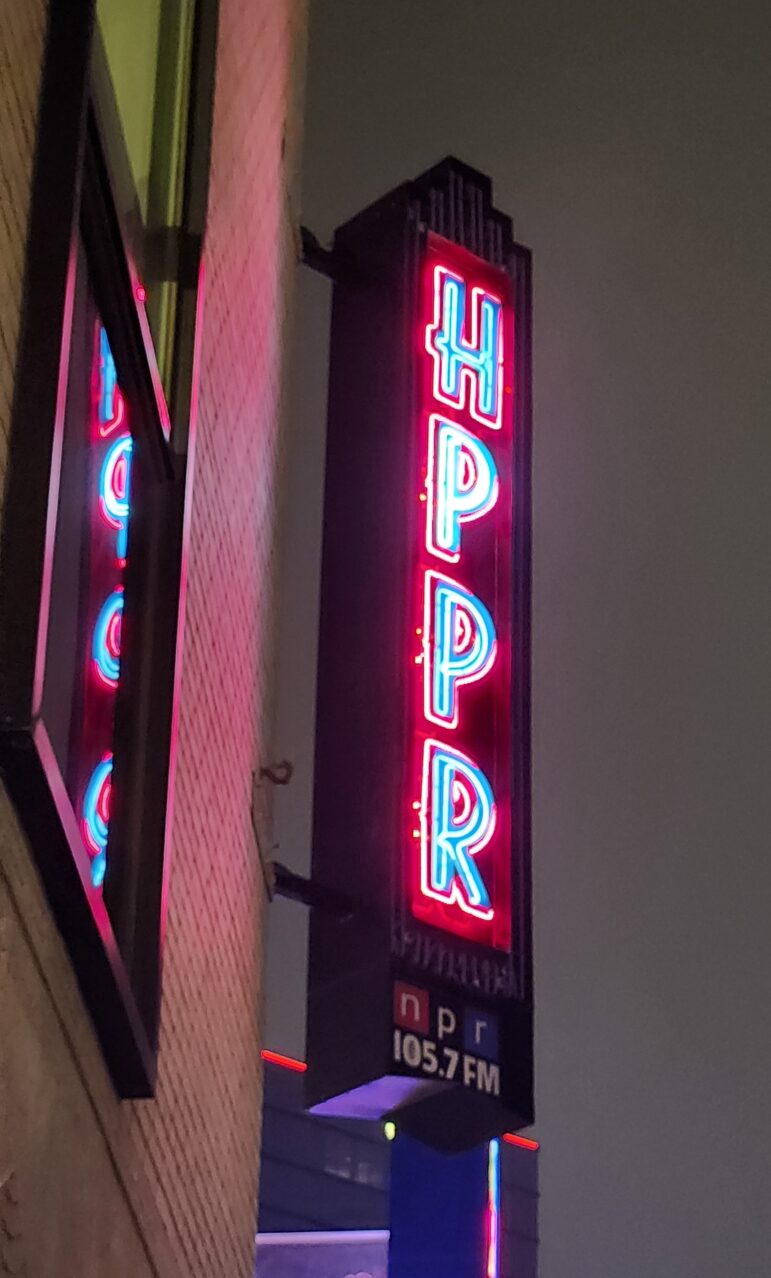How one station used AI to automate promotions and save time

Mike Janssen, using DALL-E 3
Pull file. Normalize. Add silence. Fade out by 29.7 seconds. Save. Repeat.
During my first four months as content operations manager at High Plains Public Radio, I spent several hours every week downloading and editing show promos as efficiently and consistently as possible. This ultimately meant that I was spending an inordinate amount of time hitting the same five buttons on my keyboard over and over and over again. Thankfully, this repetitive task didn’t take much brainpower to execute, so it gave me time to think. And I kept coming back to one thought: There HAS to be a better way of doing this.
I figured that a skilled programmer could likely whip together some code to edit audio faster, but a skilled programmer I am not. Though I took some basic programming classes in high school, nothing stuck. That being said, I had three things going for me: a mentor from my college internship who regularly used code to rename files; free access to the emerging AI interface, ChatGPT; and a supportive boss who both welcomed innovation and made sure I had the time in my workday to experiment.
Our station’s programming department edits audio on one of two programs. The first is Adobe Audition. The other is dBPoweramp, a program that we use either to convert audio from one format to another or to rip CDs for airplay.
When I started, dBPoweramp was just used for converting files for our ENCO DAD automation system. I quickly realized, though, that it had a shockingly powerful feature that we weren’t using. When you select a file to convert, you have the option to add other effects like “generate silence,” “remove silence,” “normalize,” “fade out” and “set minimum/maximum length.” These tools, coupled with a bit of additional fiddling, made it so I was suddenly able to cut a significant amount of editing time from my routine (even though I still had to edit one file at a time).
This led me to start digging around on the dBPoweramp website to see what other tools the program had — and I struck gold. It turns out that dBPoweramp can be run with command-line prompts using a version of their program called “CoreConverter.” For those of you who aren’t familiar with computers from around the 1980s, when computers were first becoming mainstream, you didn’t control them by clicking icons with a mouse. You had to type in commands to tell the computer what to do. The fact that dBPoweramp can be interfaced through command-line prompts takes a majority of the work out of making a program to edit audio — especially when compared to designing a program from the ground up, or running some auto-clicker program that tries to click buttons in Audition on my behalf.

But as I’ve said, I was no coder, although I did have some exposure to programming in the past. As a college intern at Delmarva Public Radio in Maryland, I worked with Chris Ranck, their director of production and operations at the time. I remembered that he used batch files to quickly rename items so they would ingest properly to work with their ENCO system. I realized that if I could combine batch code and CoreConverter with its audio editing features, the entire process could be automated.
Enter ChatGPT.
“Write me code in batch that reads file names from a text document and uses dBPoweramp’s CoreConverter to edit each file.” This was the prompt that served as my launch point. I’d be lying if I said it didn’t take a lot of thinking and countless trial-and-error sessions. But after the necessary adjustments, it worked.
As you might have guessed, the AI code wasn’t perfect, but it was good enough to get me started. When the code didn’t work, I just broke it down step by step, locating the element that wasn’t functioning and recasting the prompt or just searching the web for a solution. Once one function of the code worked, I went on to the next feature I wanted it to have, slowly adding until I was happy.
After bushwhacking my way through the weeds of code, I finally had a program that: 1) confirmed the day of the week; 2) located the correct text document for that day; 3) read all the file names from the document; 4) edited each file directly from our ENCO DAD database; 5) saved the file in the same location; and 6) made a debug log (so I could diagnose any problems if something went wrong). I even set up a Windows Task Scheduler to run the program at 11 p.m. every night, so that any file required for automation the next day would be prepped and ready.
It’s been a rewarding experience knowing that I can dive in with a few ideas and come up with a lot of saved time. And since I haven’t edited a promo for a syndicated show in months, I’ve had even more time to focus on other possible upgrades and improvements to our station’s outdated systems, as well as the station’s other needs.
Although my journey with AI has been a bit more involved than I expect most people will want (or have the time) to take on, other people in public radio have still used AI to great effect.
The most widespread use case for HPPR as a whole has been for writing scripts. Whether for station promos or in preparation for membership drives, everyone at HPPR has benefited. While the output always needs some fixing after the fact (like anything with AI), asking ChatGPT to “write a 30-second promo for High Plains Public Radio talking about how public radio is a community effort as unique as the region it inhabits” turns out to be a fairly usable starting point. HPPR has also been using Canva’s AI art generator to help speed up the turnaround for graphics on our website and newsletters.
The advancement of AI technologies over the past year has been astounding, and I believe that by embracing it, public radio can do more than ever before. That being said, it’s vitally important to be cautious. Always verify any information that an AI gives you. We once had a script end up on air that was written by AI and voiced by staff that turned out to be incorrect but that fell through the cracks of our usual checks and balances.
Also, as a word to managers, owners and executive boards: These AI tools that are coming out aren’t, and shouldn’t be, a replacement for people. In my opinion, and I think most other people would agree, what makes public radio so special are the people behind it all — the people who are from the communities they serve. In many communities, we’re the last bastion of content by the community, for the community. Let’s take the opportunity this technology provides and use it to reinvest in the mission we all care so much about. If you do need a cautionary tale for the repercussions of replacing a human with AI in a nonprofit space, just look into what happened with the National Eating Disorder Association’s hotline.
All of that aside, we’re at a point with technology where if there’s something you want to make or do, all you have to do now is ask. Even with my work, I’ve only scratched the surface. If a part of your work just seems repetitive, whether it’s editing audio or not, there’s no harm in asking your friendly neighborhood robot if there might just be a better way of doing things.
If you think my code might be of use to you or your station, or if you have any questions, feel free to reach out to me at afregger@hppr.org. I can’t guarantee I’ll have all the answers, but I’ll certainly try my best to point you in the right direction.
Good luck, and happy coding!
Alex Fregger is the content operations manager at High Plains Public Radio. Through his work, he’s been able to combine his passion for public radio with a lifelong interest in technology and learning. An interview with Alex about this work was also used for a section of Ira Glass’ inspirational talk for the Public Radio Program Directors Association, “Let’s Win Like The Winners We Are.”






